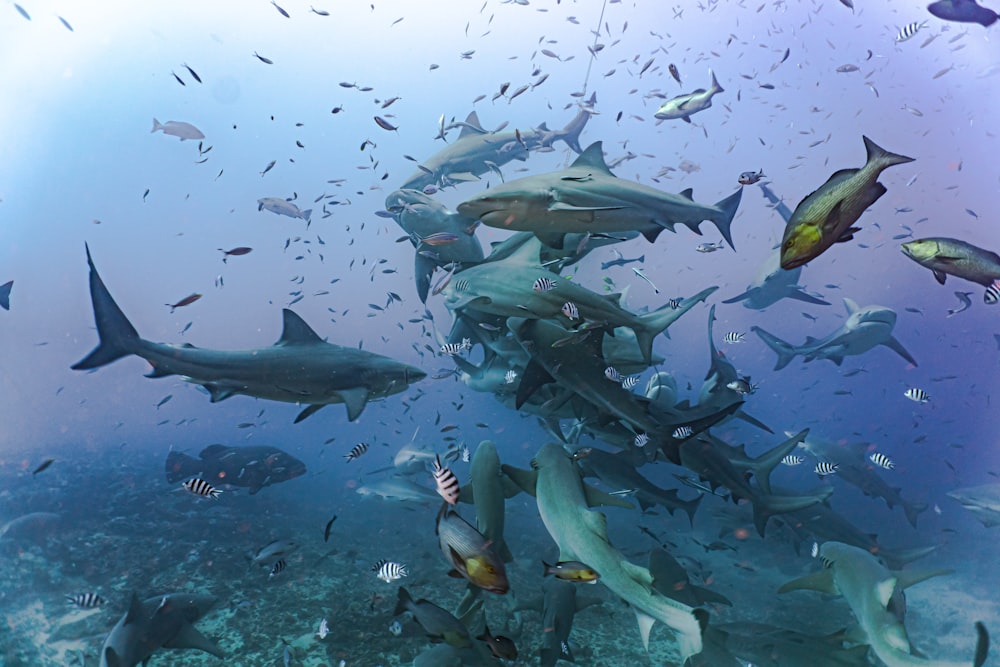If you’ve ever thought of sharks as solitary and fearsome creatures, prepare to be surprised.
In our exploration of the depths of the ocean, we’ve uncovered a fascinating phenomenon: sharks cuddling.
Yes, you read that right. These apex predators, known for their power and strength, also engage in moments of tenderness that defy common misconceptions.
Join us as we delve into the intriguing world of sharks cuddling, shedding light on this lesser-known aspect of their behavior.
Through our research and observations, we’ve discovered that these majestic creatures exhibit social behaviors that may challenge the stereotypes often associated with them.
Get ready to see a different side of sharks as we uncover the surprising truth about their cuddling habits.
Unraveling the Mystery of Sharks Cuddling
The Behavior Explained
Sharks cuddling is a fascinating behavior that has intrigued researchers and marine biologists alike.
When we delve into the intricacies of this behavior, we find that sharks engage in cuddling as a form of social interaction within their species.
This surprising revelation challenges the common perception of sharks as solitary hunters and highlights a more communal aspect of their behavior.
The Significance in Marine Biology
The discovery of sharks cuddling holds significant importance in the field of marine biology.
It provides valuable insights into the social structure and behavior of sharks, allowing researchers to better understand the intricate relationships within shark populations.
Studying this behavior contributes to our knowledge of shark ecology and can have broader implications for conservation efforts.
The Truth Behind the Term “Cuddling” in Sharks
Dissecting the Dynamics of Shark Interaction
In understanding the term “cuddling” in sharks, it’s essential to dissect the dynamics of shark interaction.
While cuddling may anthropomorphize shark behavior, researchers have documented instances where sharks exhibit close physical contact that resembles cuddling observed in other animals.
This behavior isn’t rooted in affection but is a means of communication and social interaction within shark communities.
Anthropomorphism and Misinterpretations
The concept of “cuddling” in sharks often leads to anthropomorphic interpretations, attributing human emotions to these marine creatures.
It’s crucial to avoid misinterpreting shark behavior through human-centric lenses and instead analyze their actions through a scientific lens.
While cuddling may seem endearing to us, it serves different purposes in the shark world, emphasizing social hierarchies, dominance, and communication strategies.
The Role of Proximity in Shark Social Behavior
In understanding the social behavior of sharks, the proximity between individuals plays a crucial role.
Let’s delve into how sharks interact in close quarters and the factors that influence their proximity preferences.
Instances of Sharks in Close Quarters
Observations have shown instances of sharks, known for their solitary reputation, exhibiting behaviors that bring them into close contact with one another.
These close-quarters interactions include swimming side by side, touching fins, and even rubbing against each other.
Such behaviors challenge the traditional view of sharks as solitary predators and highlight the social complexity within their interactions.
Factors Influencing Sharks’ Proximity Preferences
Several factors influence sharks’ proximity preferences, including species-specific behavior, environmental conditions, and individual characteristics.
Some shark species may exhibit more social behavior than others, leading to varying degrees of proximity preferences.
Environmental factors such as food availability and mating seasons can also influence how close sharks choose to be with one another.
Individual characteristics such as age, size, and dominance status within the group can impact their proximity preferences, shaping the social dynamics among shark populations.
Implications of Shark Conservation Efforts
Understanding Shark Behavior for Better Conservation Strategies
Understanding the social behavior of sharks can significantly enhance our conservation strategies.
By recognizing that sharks engage in social interactions such as cuddling, we are better equipped to protect and preserve their populations.
This behavior challenges the misconception of sharks as solely solitary creatures and emphasizes the need to consider their social dynamics when implementing conservation efforts.
Shark social behavior, including cuddling, plays a crucial role in maintaining the balance within their populations.
The Impact of Human Perceptions on Shark Protection
Human perceptions of sharks, often influenced by misconceptions and stereotypes, can have a significant impact on shark protection efforts.
Misunderstandings about sharks as solitary and aggressive predators may lead to negative attitudes towards their conservation.
However, by highlighting the social behaviors of sharks, such as cuddling, we can shift these perceptions and garner more support for shark protection initiatives.
Educating the public about the social nature of sharks and their interactions can change perceptions and foster a sense of empathy and appreciation for these marine creatures.
When people understand that sharks exhibit complex social behaviors, including cuddling, they are more likely to advocate for conservation measures that protect these fascinating animals.
Debunking Myths: Sharks and Their So-Called Cuddles
Sharks’ cuddling behavior is not merely a display of affection but a complex social interaction crucial for their survival.
By debunking myths surrounding sharks as solitary predators, we unveil their intricate social dynamics. Understanding these behaviors is key to effective conservation strategies.
Educating the public about the social nature of sharks, including their cuddling tendencies, fosters empathy and support for conservation efforts.
Embracing the nuances of shark behavior challenges misconceptions and paves the way for a more informed approach to protecting these magnificent creatures.
Let’s continue to advocate for the conservation of shark populations, recognizing the importance of their social interactions in maintaining ecological balance.
Frequently Asked Questions
Sharks display surprising social behavior such as cuddling, swimming side by side, and touching fins as a form of social interaction.
Shark social behavior is influenced by factors like proximity, hierarchy within populations, and communication dynamics among individuals.
Understanding shark social behavior can help improve conservation strategies by challenging misconceptions, promoting population balance, and garnering support for protection initiatives through increased public awareness.
